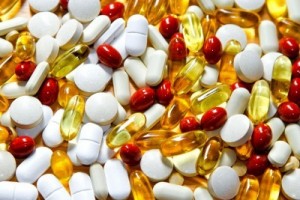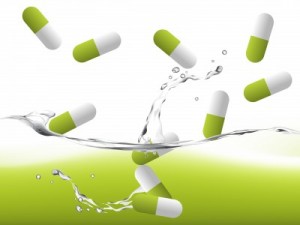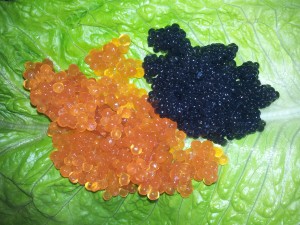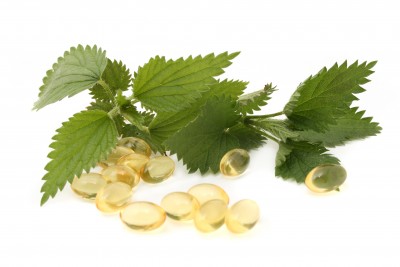Capsulation
Capsulation technolodgy
Capsulation map:
1. The following can be capsulated:
– emulsions;
– dispersions;
– suspensions;
– colloidal solutions.
2. Capsules:
– have the spherical geometrical shape;
– are 1.5 to 10.0 mm in diameter;
– can be coated with various glazes and membranes (chocolate, caramel, etc.)
– can stand up to severe mechanical effects;
– can stand up to thermal effects (pasteurization);
– can interact with neither encapsulated substance, nor food substance, into which they are introduced;
– ensure complete safety of encapsulated substance;
– are characterized by long shelf life.
3. Capsule types:
– single-layered capsules;
– multilayer capsules (each membrane has its own properties);
– ‘capsule-in-gel’ model.
4. Scope of use:
– food-processing industry;
– pharmaceutical industry;
– chemical industry;
– textile industry;
– medicine;
– animal husbandry;
– agriculture;
– biotechnologies;
– microbiology.
Innovation technology and author’s equipment
A technology and author’s equipment for capsulation of hydrophilic systems (e.g. emulsions, dispersions, suspensions and colloidal solutions) has been developed, allowing capsules possessing innovative properties to be produced. The novelty of this designed product consists in that it is currently the first precedent of capsulation of substances containing a water component. In the worldwide practice, technologies of encapsulation of fatty (waterproof) systems into gelatinous membranes are employed. To date, nobody has learned to capsulate ‘water’, with long-shelf-life thermostable capsules being produced.
The capsules may be characterized by spherical (or near to spherical), 1.5 to 10.0 mm in diameter, coated (in case consumer properties require to be enhanced) by external coatings of various colors and origins. As to its structure, this invention is characterized by the presence of inner contents and a gel-type given-thickness membrane containing calcium alginate. The inner capsule contents represent a hydrophilic substance or emulsion and/or suspension of dispersion.
Many substances with various physical-and-chemical properties can be capsulated. Capsular products can be used in pharmaceutical, food-processing, chemical, photographical, textile and oil-refining industries, as well as medicine, agriculture, and biotechnologies.
Capsule filler may be in the form of colloidal, emulsion, suspended or gel-type system.
Capsule membranes can stand up to the following effects: technological processing; mechanical effects (strong stirring); heat treatment (pasteurization or sterilization during 210 to 260 min at 130°С under condition of compensating pressure); mixing with other food components; and long storage (capsules’ storage life depends on inner fillers’ properties only).
Controlled release of encapsulated substances into a medium has been reached due to diffusion through capsule membrane with a preset rate (for instance, diffusion of a biologically active or pharmaceutical substance in a required body area).
Capsule models with various properties have been designed. The main models are as follows:
-single-layered with a single membrane based on sodium alginate (for capsulation of hydrophilic substances);
-multilayered (up to three membranes), where external membranes are gelatinous and internal ones are alginic (for capsulation of hydrophobic and surface-active substances);
-‘capsule-in-gel’ model, where capsule membranes ‘merge’ with gel, creating a monolithic structure of a given thickness (either porous or impermeable system can be created), with such system keeping stable under the influence of gastric juice or gastric enzymes. The system may only be ruined upon getting into the pancreas (in alkaline рН) (for different types of insulin: normal, fast and prolonged in a single container).
The following substances can be capsulated:
1. Essential and aromatic oils; fish oil; and water- and fat-soluble vitamins.
2. Systems which are sensitive to atmospheric oxygen, humidifying or temperatures, including (bitter or unsavory) aromatic and biologically active substances, enzymes, pigments, dyes, etc.
3. Functional, treatment-and-prophylactic substances and various food forms having encapsulated micronutrients, such as probiotics bifidus bacteria, enzymes, mineral substances, and vitamins.
4. Lactic acid cultures (for protection of cells against bacteriophages, enhancement of their survival capacity when dried, preservation and support of bacteria’s and lactic cultures’ stability in human stomach during their transportation to the intestinal area).
5. Unstable compounds, such as mineral substances, vitamins A, E, D, C,-carotin, 3 and 6-fat acids, lutein, zeaxanthin, lycopene, oligosaccharides, yeast, spirit and oil extracts of medicinal herbs (e.g. sea-buckthorn berries, ginseng, St. John’s wort, radiola, camomiles, thyme, calendula, valerian, motherwort, peony, hawthorn, etc.).
6. Complex biomolecules, such as antibiotics, hormones, vaccines, enzymes, insulin, albuminous preparations, amino acids, peptides, etc.
Depending on tasks, the following is probable:
1. Obtaining of capsular products having preset set physical and structurally-mechanical characteristics, such as capsule size, membrane thickness, inner contents/membrane ratio, breaking strength, modulus of instantaneous elasticity, etc.
2. Setting of preset dimensional characteristics (1.0 to 10.0 mm).
3. Setting of a preset capsular membrane/inner contents ratio (5:95 to 50:50).
Giving preset characteristics to membranes (thickness, structure, permeability, durability, elasticity; stability to the influence of enzymes, pepsin, gastric juice, temperature, pressure, and the like).
Capsulated products are offered as one of the ways of targeted delivery of nutrients or medicines to specific sites of the human body (gastrointestinal tract, pancreas, small and large intestines, while providing their maximum bioavailability and improving their medical and biological effectiveness.
A salient feature of capsule consists in programmable release of capsule contents in a required site of the human body.
Membranes have immunopromoting, antiallergic and anti-inflammatory effects. They bind exogenous and endogenous compounds in the human gastrointestinal tract, in particular salts of heavy metals and radionuclides, while acting as a means for human body detoxication and possessing medical-and-preventive treatment properties.
I. capsular forms of probiotic microorganisms
Today, there exist a great lot of factors diminishing natural human body protective barriers.
In spite of achievements of modern medicine, the human body has not become stronger. On the contrary, its adaptive capacity is continuously declining under the influence of constantly increasing loadings. Such process are going on: sensitivity to infections is increasing; chronic diseases are growing in number; indicators of immunodeficiency, alimentary-dependent diseases and anemias are worsening, with all of this being accompanied by worldwide vitamin deficiencies.
People require more protective means. A conscious task of every modern human is to preserve his/her own health and his/her relatives’ health. Thus, food quality and health food play a key role.
In any human organism, the key organs being primarily and evolutionally influenced by food are organs of the digestive system, and the first one to respond to the meal’s structure and quality is its inseparable component, such as microecological system.
In the human gastrointestinal, there are billions of microorganisms, whose role consists in stimulation of immunocompetent cells, immunity maintenance, digestion and protective function against pathogenes or parasites.
Activities of bacteria in human body are very important and vital as they create necessary conditions in the intestines (while ensuring digestion), participate directly in breakdown of proteins, fats and carbohydrates into simple components and ensure transportation of nutrients, vitamins and microelements through intestinal walls. They possess their own ability to synthesize vitamins or vitamin-like substances and are characterized by expressed antitoxic activity (while binding and excreting toxic metabolic-action products from human organism). Also, they ensure intestinal function (bowel action) and perform one of the basic functions, i.e. antioxidant protection against free radicals’ destructive action. They are of exclusive importance in view of formation of adequate immune response and strengthening of nonspecific organism resistance. Furthermore, they promote normalization of sex hormones recirculation.
This is a far from complete list of tasks performed by microflora in human organism in view of the bacteria’s exclusive role in preservation of human health.
The quantitative and qualitative composition of microorganisms in healthy human body is constant, while his/her performance efficiency is stable. However, more and people suffer recently from a disease named ‘dysbacteriosis’ that is rooted in intestinal microbiocenosis disorder.
Modern eating habits, life style, uncontrolled administration of antibiotics, stresses, consumption of preservative- and toxin-containing products kill normal protective microflora in the gastrointestinal tract. The number of useful bacteria decrease, which leads to intestinal microflora balance disorder and, as a consequence, to decrease in immunity.
All these factors have a disastrous influence on microflora. Also, it should be noted that human body is affected by these factors each and every day, which generates a need for permanent preventive treatment of gastrointestinal microbiocenosis.
The most available and effective preventive treatment of such body dysfunction is regular use of functional food products having preset probiotic properties, especially products containing useful bifidus- and lactic bacteria. By having the regulating effect on physiological processes, biochemical reactions and psychosocial behavior in human, such products support physical health and reduce risk of disease occurrence, while performing many vital functions in human body.
Where certain conditions are satisfied, probiotics may get along together with lactic acid cultures of ferments, therefore they may be included in various kinds of fermented milk product. In scientific and technical literature, there are reports on useful effect of probiotical lactic acid products, including their ability to reduce the risk of malignant neoplasms occurrence and excrete toxic substances from human body.
However, the efficiency of such products’ action is low, which is caused by a natural gastric barrier in human body. For the purpose of making such probiotical products’ action effective, sufficient quantities of bacteria (or so-called colony-forming units) are required to pass through a human stomach.Where probiotical microorganisms enter a human stomach, they may be affected by hydrochloric acid and various enzymes that may be contained in gastric juice and influence aggressively on bacteria. In quantitative terms, the level of colony-forming units decreases and becomes by 4 to6 orders of magnitude less over the period of staying of a probiotic preparation in a human stomach (30 to 45 minutes).So by the time such probiotic preparation reaches the large intestine’s weakly alkaline environment being favorable to live activity, minor rests remain from the initial quantity of bacteria in it, which rests can already form a viable colony.
In order to solve the problem of through-stomach transportation and delivery to intestines of required quantity of probiotical bacteria, the use of capsulation technology is proposed, which technology is directed to enhancement of bioavailability of therapeutic or medical-and-preventive preparations containing probiotical microorganisms. It is also directed to reduction of risk of occurrence of undesirable reactions.
The object of the project is as follows:
Creation of capsules having encapsulated cultures of probiotical microorganisms, being 1.5 to 10.0 in diameter, possessing thermostable properties, resistance to influence of acidic media and pepsin, mechanical and osmotic resistance to influence of external physical and chemical factors, such as mechanical action, rise in temperature, pressure change as well as enhancement of protection (in view of therapy) of encapsulated substances.
Another object of the proposed technology is production of capsules forming a strong barrier against penetration of a substance contained in a capsule to an outside ambient; capsules ensuring more effective display of a complex of biological, pharmacological, preventive or medical properties of encapsulated substance in target organ; capsules, in which a sufficient amount of active encapsulated substance is protected with a membrane and can be in different рН-media during estimated periods of time; capsules characterized by long storage life.
The technical result of the proposed project consists in:
Capsules having encapsulated cultures of probiotical microorganisms inside them, produced by way of gellation, being spherical (or near to spherical) in shape, being 1.5 to10.0 mm in diameter and coated (in case consumer properties require to be enhanced) with respective external coatings of various colors and origins. As to their structure, capsules are characterized by the presence of inner contents and a gel-type given-thickness membrane containing calcium alginate.
The gel-type membrane can consist of two or more layers containing calcium alginate in different concentrations or a mix of calcium alginate with substances of polysaccharide nature (e.g. xantan, carageenan, helan gum, modified starch, guar gum, agarinic gum, miscitic gum, cellulose derivatives, plantain gum, tamarind gum, carob-tree gum, and the like) and proteic nature (e.g. gelatin, protein isolates, proteic preparations, etc.) or their mixes.
The capsule inner contents represent a hydrophilic substance and / or aqueous suspension and / or dispersion of probiotics microorganisms in effective amounts.
II. Capsule forms of medicinal preparations
The present invention relates to the microbiological, medical, chemical and a pharmaceutical industries, in particular comprising a method for capsulation of medicinal, medical-and-preventive and therapeutic agents with production of capsules of 1.0 to 15.0 mm in diameter for oral administration, with such capsules being designed for release of a physiologically active substance (i.e. capsule filler) in a target organ, namely pancreas, small intestine or large intestine.
Each capsule consists of a membrane (a prescription compound of which includes sodium alginate) and inner filler that represents a fluid or viscous emulsive, suspended or gel-type medicinal agent or therapeutic preparation.
The capsules possess resistance to influence of acidic media and pepsin; thermostable properties; hydrolytic and fermentative stability; increased strength and resistance to from-outside influence or intervention; mechanical and osmotic resistance to influence of external physical and chemical factors, such as mechanical stirring, rise in temperature and pressure change.
The capsules are characterized by enhanced protection in view of preservation of encapsulated substances. The capsules may also form a barrier against penetration of an encapsulated substance into capsule membranes or outside ambient; the capsules ensure more effective display of a complex of biological, pharmacological, preventive or medical properties of encapsulated substance in target organ; the capsules containing preparations with combined or targeted effect are characterized by enhanced bioavailability and pharmacodynamics; in the capsules, an active encapsulated substance is protected with a membrane and can be in different media during estimated periods of time.
The following hydrophilic substances or water suspensions and dispersions can be capsulated:
– functional special-purpose components;
– aqueous extracts of vegetative and animal raw materials;
– microelements in the form of salts or complexes;
– vitaminic, immune and immunobiological preparations, amino acids, substances of proteic or mineral origin;
– live cells in active or inactive forms; bacteria;
– antibiotics;
– very small pieces of fabrics, biologically-active, medicinal, medical-and-preventive, therapeutic preparations;
– food additives.
The background of the invention is the fact that prolonged release in the gastrointestinal tract and delivery of medicinal, biologically-active and therapeutically valuable substances to target organs are the key principles of effective treatment, preventive care, biological value enhancement and therapy. In order to allow such treatment, preventive care or therapy to become a usual procedure, there have been developed such systems that ensure prolonged release and effective in vivo-delivery of encapsulated substances to target organs or cells are developed, with properties of these substances being preserved completely.
The capsules are designed for prolonged release of encapsulated substances in gastrointestinal tract, for easy delivery of target desired products and compounds and for delivery of capsule fillers to target organs, namely pancreas and small or large intestines. Furthermore, encapsulated functional special-purpose components as well as vitaminic, mineral, proteic and biologically active additives can be intended for enrichment and enhancement of products’ food or biological value as well as for creation of dietary products and special food products.
Capsulated insulin.
A technology and equipment have been created, which are capable of commercially manufacturing up to 10 thousand insulin-containing capsules per hour.
The main preconditions for insulin capsulation are as follows:
– reduction of adverse effect of insulin on human body;
– reduction of amount of insulin consumed by a patient;
– extension of insulin storage life;
– control of rate of insulin release from a capsule;
– masking of insulin taste/odor;
– avoidance of environmental effect on the product;
– prolongation of medical-and-preventive effect, which is caused by deceleration of insulin release from a capsule due to the presence of permeability-controlled membrane;
– transportation of insulin to pancreas (target organ);
– reduction of insulin evaporation as a result of its protection with air- and gas-impermeable membrane;
It is just direct administration of insulin into bloodstream that predetermines the main limitation of this treatment method. Under physiological conditions, the pancreas-released insulin enters the bloodstream via liver that performs control of the amount of this hormone passing therethrough. In case of needle administration the liver misses such control, and the level of insulin in blood may exceed a required one at a given time. This, in turn, may lead to a number of severe complications as observed in patients suffering from diabetes mellitus. Today, some works are carried out for the purpose of creation of a double-membrane for insulin. The first membrane is dissolved in stomach (acid media), and the second membrane is dissolved in pancreas (alkaline media). Upon having been released from two membranes, such insulin finds itself at the ‘stomach—pancreas’ boundary, i.e. where it is naturally released by the pancreas.
The market volume (for such capsular form of insulin) amounts 150 mln. patients suffering from diabetes mellitus worldwide. This figure increases from year to year.
III. Capsulation of alcohol-containing components
This refers to capsules having inner contents in the form of alcohol component at the level of up to 20 per cent (e.g. low-alcoholic group, liqueurs). As the capsules are dissolved not in the stomach but in the pancreas, small intestine and large intestine, the use of such alcoholic form may cause fast drunkenness, however, with no alcohol vapors from mouth. The capsules may be administered to human body via liquid media (e.g. drinks, beverages, juices) as well as via solid food forms.
IV. Food form: caviar
One of the most striking examples of capsulation employment is an analogue of sturgeon and salmon caviar. As of today, it is a top-of-the-line technology for production of so-called ‘artificial caviar’. The product shows to good advantage as compared to its predecessors since it is as similar as possible to natural products in view of its flavor and structural properties. The advanced technology has made it possible to diminish the product cost price and increase shelf life. Also, it has allowed the product to be produced with higher food value and with no preservatives added.
This new product is worthy to be considered as a good alternative for natural caviar, not only as a separate segment of simulated products.
V. Capsulated food products
This refers to the possibility of capsulation of a number of products, such as mustard, ketchup, mayonnaises, emulsive sauces, juices, dressings, salad dressings, etc. Such products have a great potential in many segments. Firstly, it is a semifinished product for meat and dairy industries, which may be employed in the form of flavor fillers for cooked sausages, minced meat systems, processed cheeses, hard cheeses, cottage cheeses, etc Secondly, it is possible to consider a question of sale of such products through a retail network to end consumers. A separate market segment for such products is the fast food system, for example, a company which sells various salads at its restaurants, with a packed sauce being separately dished up to each salad packing. Such willy-nilly packing costs (which makes the products’ cost price essentially higher) are a desperate measure as no dressed salads can be stored for a long time. It is possible to avoid such packaging problems through the use of capsulated forms, where an estimated amount of sauce will be added directly to each salad packing. The same takes place and in the field of sweet sauces, jams, jam, condensed milk, honey etc.: all these food products can be capsulated and used as either finished food forms for consumers or semifinished high-readiness products.





